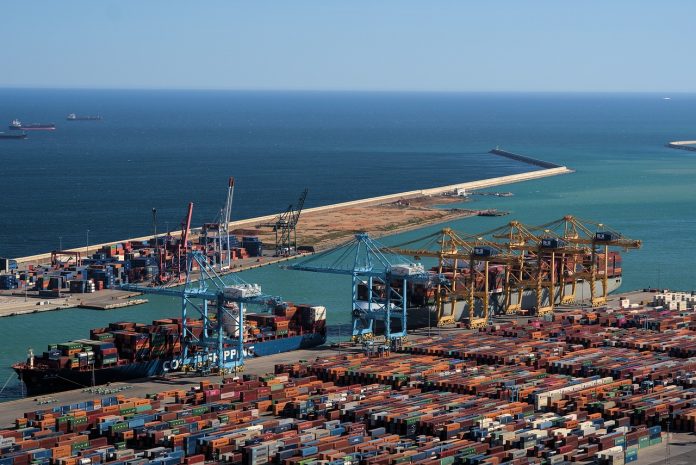By Craig Reed, below, GM Cross-Border, Avalara
 The past decade has seen dramatic shifts in international trade, bringing with them a complex web of cross-border compliance obligations that businesses must navigate if they are to not only survive but thrive in the modern digital economy. From Brexit in the UK to the implementation of landmark sales tax legislation in the U.S., businesses must adapt to a new era of cross-border complexity.
The past decade has seen dramatic shifts in international trade, bringing with them a complex web of cross-border compliance obligations that businesses must navigate if they are to not only survive but thrive in the modern digital economy. From Brexit in the UK to the implementation of landmark sales tax legislation in the U.S., businesses must adapt to a new era of cross-border complexity.
This evolving landscape has had a profound impact on business strategies. According to new research from Avalara, a staggering 8 in 10 businesses report that cross-border complexity influences their decision to enter new markets. This statistic underscores the rapid evolution of the global economy and highlights the unique set of challenges businesses face when trading across borders.
Despite this increasing complexity for businesses when it comes to compliance, international shopping is only growing more popular with consumers. Younger consumers especially are driving this trend, drawn to the expanded product range, quality and affordability offered by the global marketplace.
While consumer appetite for international shopping grows, businesses face significant hurdles in meeting this demand. Finding themselves out of touch with customers’ priorities, businesses allow regulatory challenges to directly impact the consumer experience, leading to cart abandonment, retailer abandonment and even package refusal on the doorstep.
For SMEs with limited resources, these challenges can be particularly daunting. Many struggle to remain compliant while keeping customers satisfied. As businesses grapple with these issues, AI and automation technologies are emerging as potential game-changers to support SMEs as they look to navigate compliance complexity, enhance customer experiences and confidently pursue international growth opportunities.
The unique SME challenge
Small and medium-sized businesses face unique cross-border compliance hurdles. Unlike their larger counterparts, SMEs often lack dedicated tax departments or adequate resources to devote to compliance efforts. Many rely on a single financial professional or a small team to handle all aspects of their finances, including increasingly complex international tax obligations.
The 8 in 10 businesses worldwide – 9 in 10 in the UK – reporting that cross-border compliance complexity impacts their decision to enter new markets cite customs duty and import calculations, HS and tariff code classification, trade restrictions and shipping complexities as the biggest challenges.
The hidden costs conundrum
These common challenges, while causing potentially costly administrative headaches for businesses, also directly impact consumers. 43% of consumers surveyed said that not having the full final cost, including duties and taxes, available at checkout is one of the most likely causes of them abandoning their cart.
60% of consumers surveyed have experienced surprise costs due to customs duties charges upon delivery. Half of them said the costs were “shocking”, and three quarters would reconsider purchasing from the business again. Almost half (49%) said they would choose not to accept the package altogether.
The root cause? Despite consumers’ preference for transparency, 75% of businesses use Delivered at Place (DAP) shipping, leaving customers responsible for customs fees upon delivery. A third of businesses rely solely on this method.
These numbers tell an important story: tackling cross-border challenges is not just a matter of business efficiency or remaining compliant, it is central to customer experience, customer satisfaction and ultimately, the business’s international growth potential. Effectively navigating cross-border complexity might be the difference between a repeat sale and a lost customer.
Leveraging technology to manage compliance
Thankfully for SMEs, there has been a steady influx of innovative solutions designed to streamline compliance and other processes to reduce the risk of errors in recent years. These solutions address a manual-intensive but essential operational layer, automating routine processes to allow organisations and departments to focus on achieving the best outcomes for the business.
What’s more, adoption of these technologies is on the rise. 52% of businesses surveyed globally are already leveraging AI and automation technologies in their compliance efforts and an additional 26% plan to adopt such technologies within the next two years.
For SMEs looking to grow internationally while keeping their customers on side, integrating these technologies can be a game-changer. AI-powered tools can help identify potential compliance issues before they become problems. By automating compliance tasks, leadership teams also have more time to focus on operational excellence and personalised customer experience.
As an example, businesses can solve the customs duties calculation challenge through automation. This allows them to advertise shipping as DDP (Delivery Duty Paid). In this way, the customer knows exactly what they’re paying at checkout and won’t be met with any unwelcome surprises upon delivery.
Similarly, assigning the correct HS and tariff codes to your goods is both immensely important and potentially very complex – 41% of businesses highlight this as a key challenge. If the incorrect code is assigned to a shipment, this can lead to delays at customs, leading to unhappy customers. Using an automated solution, such as Avalara’s AI-driven Item Classification tool, can alleviate this issue and any concerns over human error.
Embracing the future of cross-border trade
While regulatory challenges and compliance issues can seem daunting, they do not have to be barriers to international growth. By leveraging AI and automation technologies, businesses cannot only navigate these complexities more effectively but enhance the customer experience, reduce cart abandonment and foster customer loyalty.
The future of cross-border commerce lies in embracing these technological solutions. They offer a way for businesses to confidently expand into new markets, ensure compliance across various jurisdictions, and provide transparency to customers throughout the purchasing process.

